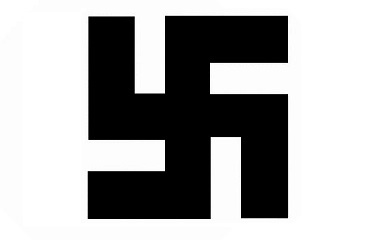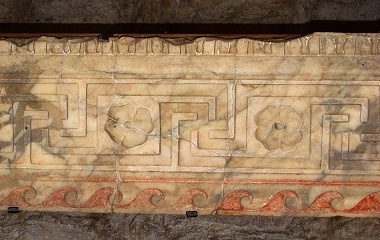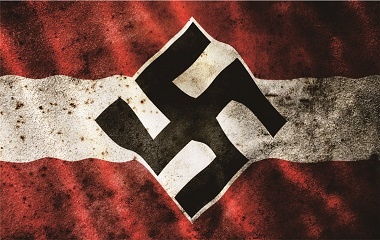An ancient symbol of spirituality, wellness and good luck suddenly became synonymous with intolerance, hatred and destruction during World War II. A rational belief in ethnic and national pride was taken to heinous extremes, resulting in the meaning of the swastika remaining maligned still today.
What Is the Swastika?
The word Swastika comes from the Sanskrit word svastika, meaning well-being and good luck, and refers to an ancient symbol which appears in religions worldwide, but is found most commonly in India. In the Hindu culture, the symbol has been used since the Vedic period and is considered sacred. With the rise in popularity of the goddess Lakshmi and Tantra, the symbol was included in numerous Charkas and Yantras. The ancient symbol spread to sister religions, Buddhism and Jainism. According to the Indian philosopher, author and linguist Prabhat Ranjan Sarkar, the deeper meaning behind the symbol is permanent victory. A variation of the symbol was used by Nazi Germany, leading to a predominately negative view of the swastika.
Etymology and Usage
The root of the word swastika is swasti, which has many meanings in Sanskrit dictionaries, including: a departing word or phrase, denoting wellness, giving a blessing, or the conclusion of a ritual. The symbol has additional meanings in the Hindu culture, such as: a lucky charm, the point where four roads cross, a posture in Tantra, God, and energy. Even to the Hindus, the symbol has different meanings. The right-hand symbol refers to the sun and the god Vishnu, while the right-hand version refers to magic and the goddess Kali. They use the symbol during rituals, when it is painted on one’s head.
Swastikas in Other Cultures
In China, the swastika symbol is included in the writing system and means “eternity“. Similarly, in Japan, the symbol is including in writing. On a map, the symbol represents the location of a Buddhist temple in East Asia.
The symbol dates back as far as 8000 years, to the Vinca culture, which existed in the region of today’s Serbia. In Kiev, an ivory artifact, dating back to the Paleolithic or Stone Age, was found with engravings of swastika patterns on it. Early pagan symbols of the Slavic people included the little sun and were engraved near graves to represent immorality. In ancient Greece, the symbol also appeared on pots and textiles, dating back as far as the 7th century BC. The symbol was also used by Phoenician priestesses and represented the sun in their culture.
During the Bronze Age in Western Europe, the symbol appeared on the Swastika Stone in Yorkshire. The Celts used the swastika symbol and sunwheel symbol interchangeably, archeological findings reveal, sometimes with the figure of a sky god included. An ogham (medieval Irish alphabet) stone found in Anglish, Ireland featured two swastikas.
In Norse mythology, the two symbols were viewed as representing the same concept. The swastika symbol was often linked with the sky god, Thor, and frequently engraved on hammers. Thor’s hammer may have been interpreted by the Germanic people as the same as the sunwheel and swastika. The three symbols connoted “good luck” in runic inscriptions and in spells. The American Indians, especially the Navajo, used the swastika symbol to represent their “whirling log“, a symbol linked to healing.
Modern Usage
Heinrich Schliemann, a German archeologist and proponent of the historicity of Homer’s works, found a hooked-cross symbol in the late 1800s, on the site he believed to be the mythological city of Troy. The site, Hissarlik, is situated in today’s Turkey. The Theosophical Society included the swastika in their symbol in the 1880s. To the occult group, it was associated with sacred fire, Thor’s hammer, spirt and matter, and the cosmos.
The symbol was carried further west in the early 20th century and became used widely in advertising, by even Coca-Cola and the girl scouts! This practice stopped with the rise of the Nazis in Germany. The symbol was discovered by German scholars, who had been studying ancient Sanskrit texts. They assumed, since Sanskrit appeared to resemble their own language, they must have common ancestry with the Hindu. They also adopted the Sanskrit word Aryan as a term for their superior master race, but the term actually dated back to approximately 1500 BC and referred to the people who migrated to India around that time. Völkisch, or nationalist groups in Germany, in the early 20th century, were developing a great sense of ethnic pride, which was often combined with occult practices. These groups, which included anti-Semitics, adopted the swastika, since the symbol had ancient Germanic roots. The symbol, or Hakenkreuz, the hooked cross, with a white circle in the background, then became the easily recognizable Nazi symbol.
In 1985, Carl Sagan, astronomer and cosmologist, published a book entitled Comet which describes the nature of comets and their tails. One of the comet tails documented in his work, has four arms which cross over each other, similar to the swastika symbol. The innovative scientist further purported man should be able to live on and colonize comets!
The swastika, an ancient symbol, is in use today by modern religious movements where it represents things like peace, Buddha, Odin and self-realization, rather than the negative association it was tainted with by the Third Reich. It is unfortunate that the symbol, for many people, immediately connotes the extremism and destruction of the Nazis over a period of six years, rather than the positive, enlightening and spiritual meaning it had for thousands of years prior to World War II.
Swastika






No comments:
Post a Comment